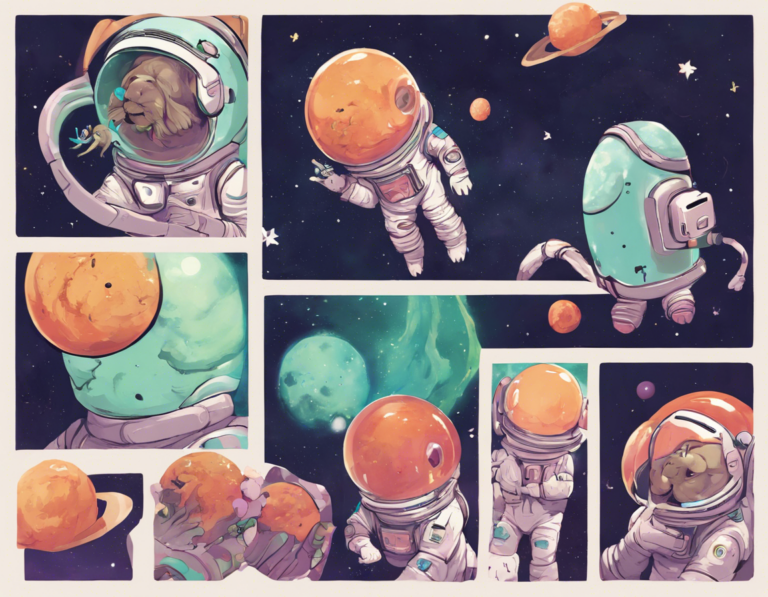
Introduction
As we look towards the future of space exploration, one aspect that may be often overlooked is the potential for intergalactic gardening. Not only does gardening in space provide a means to produce food for long-duration space missions, but it also offers a unique opportunity to study plant biology in microgravity environments. In this comprehensive guide, we will explore the exciting world of space gardening, from the challenges and opportunities it presents to the latest advancements in the field.
The Benefits of Space Gardening
-
The primary benefit of space gardening is the production of fresh food for astronauts during extended missions. Relying on resupply missions from Earth can be both costly and logistically challenging, making the ability to grow food in space essential for long-term space exploration.
-
In addition to providing sustenance, plants play a crucial role in air revitalization by absorbing carbon dioxide and releasing oxygen through photosynthesis. This makes them a vital component of life support systems on spacecraft and space habitats.
-
Beyond practical considerations, space gardening offers psychological benefits to astronauts by providing a connection to nature and a sense of purpose through nurturing living plants in an otherwise sterile environment.
Challenges of Gardening in Space
-
One of the primary challenges of space gardening is the absence of gravity, which can significantly impact plant growth and development. Plants rely on gravity to orient themselves and guide root growth, so scientists must develop innovative techniques to overcome this obstacle.
-
Another challenge is the limited availability of resources in space, such as water and nutrients. Closed-loop systems that recycle and reuse these resources are essential for sustainable space gardening practices.
-
The extreme conditions of space, including high levels of radiation and microgravity, can also pose risks to plant health. Scientists must develop hardy plant varieties that can thrive in these challenging environments.
Innovations in Space Gardening
-
Scientists and engineers have been developing advanced technologies to support space gardening initiatives. One such innovation is the Veggie system, a deployable plant growth unit currently in use on the International Space Station (ISS).
-
The Veggie system utilizes LED lighting to provide plants with the specific wavelengths of light they need for photosynthesis. This technology allows astronauts to grow a variety of crops, including lettuce, radishes, and wheat, in the microgravity environment of space.
-
Researchers are also exploring the potential of hydroponic and aeroponic systems for space gardening, which eliminate the need for soil and optimize resource efficiency by delivering water and nutrients directly to plant roots.
Future Prospects for Space Gardening
-
As we look ahead to future manned missions to Mars and beyond, space gardening will play an increasingly critical role in sustaining human life in space. Researchers are working on developing bioregenerative life support systems that integrate plants into the life support infrastructure of spacecraft and habitats.
-
In the coming years, we can expect to see advances in genetic engineering to create crops that are specifically tailored for space environments. Traits such as increased drought tolerance, resistance to radiation, and enhanced nutrient content will be essential for successful space gardening ventures.
-
Collaborations between space agencies, academic institutions, and private companies will drive innovation in space gardening and pave the way for sustainable food production in extraterrestrial environments. By leveraging the unique capabilities of each sector, we can overcome the challenges of space gardening and unlock the full potential of intergalactic agriculture.
Frequently Asked Questions (FAQs)
-
Can plants grow in space?
Yes, plants can grow in space with the right environmental conditions and support systems in place. Technologies like the Veggie system on the ISS have demonstrated successful plant growth in microgravity. -
What are the benefits of growing plants in space?
Growing plants in space provides fresh food for astronauts, supports air revitalization, and offers psychological benefits by connecting astronauts to nature. -
How do plants adapt to microgravity?
Plants adapt to microgravity by developing new strategies for root growth and nutrient uptake. Scientists study these adaptations to improve plant growth in space. -
What plants can be grown in space?
Crops like lettuce, radishes, wheat, and various herbs have been successfully grown in space. Researchers continue to explore new plant varieties for space gardening. -
How do astronauts take care of plants in space?
Astronauts aboard the ISS are responsible for watering, monitoring, and maintaining plant growth experiments. They follow specific protocols to ensure the health of the plants. -
What challenges do astronauts face when gardening in space?
Challenges include overcoming the effects of microgravity on plant growth, managing limited resources like water and nutrients, and protecting plants from radiation exposure. -
How does space gardening contribute to sustainability in space missions?
Space gardening contributes to sustainability by reducing reliance on Earth for food supply, optimizing resource utilization, and supporting closed-loop life support systems. -
Are there any risks associated with space gardening?
Risks include plant stress due to microgravity conditions, potential contamination of the spacecraft environment by plant pathogens, and the need to maintain sterile conditions for plant growth. -
What role does technology play in space gardening?
Technology enables precise control of environmental conditions, such as lighting, temperature, and humidity, to support plant growth in space. Advanced systems like hydroponics and aeroponics are used for resource-efficient gardening. -
How can space gardening research benefit agriculture on Earth?
Insights gained from space gardening research, such as plant responses to stress and resource limitations, can inform agricultural practices on Earth, particularly in challenging environments like deserts or arid regions.